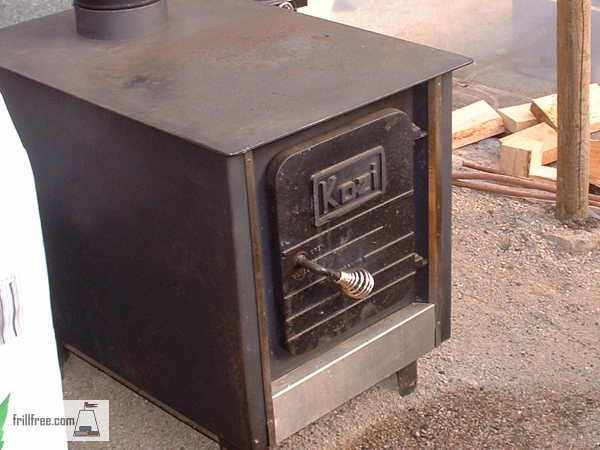- Homesteading
- Fire
- Masonry Stove
Make Your Own Masonry Stove
Enhance the Reliability of Wood Heat
In my greenhouse, I was lucky enough to find a good quality woodstove that was no longer acceptable for use in a dwelling (it has to be certified and have a glass door if you want to get insurance). For a greenhouse, that's not an issue.
The most important feature of a woodstove for a greenhouse is that it holds enough wood to keep going for a while so you don't have to continually run down to stoke it, and it needs to provide slow even heat.
That's where the sticky part happens. Most woodstoves, certified or not, tend to be really hot for a while, but then cool off quickly.
So make your stove a masonry stove, to add mass that will soak up the warmth and release it slowly over time.
This ensures that you'll have time to sleep in between stokings.
 Masonry Stove - prior to the masonry part
Masonry Stove - prior to the masonry partThe woodstove in the greenhouse is a Kozi, a brand made in Sweden originally. They are pretty solid so they don't warp, and they're heavy. I recommend using a really firm base to put it on. My greenhouse has a compacted dirt floor, using the existing sandy soil, so no problem there.
Once it was in place, I decided to use concrete blocks filled with sand to provide the mass. You could use gravel or even larger rocks, which will work equally well.
 Masonry Stove with concrete blocks stacked around it
Masonry Stove with concrete blocks stacked around itThe stove kept enough heat in it for about three to four hours, overnight. I was using mill ends, which fit perfectly in it - the firebox is two feet and a bit long.
The trick is to open the door to get the draft going, light the kindling and newspaper until it's roaring, then close it down. On a good night, when I had plenty of small kindling, five minutes would be all I needed to get it going.
Very seldom were there glowing coals that I could just rekindle, but the warmth of the metal helped.
 Two types of concrete blocks - the top ones are filled with sand for more mass
Two types of concrete blocks - the top ones are filled with sand for more massIn addition to the blocks there are also two old pressure tanks. Filled with water, these also act as heat sinks. Water is THE best heat storage and will keep a greenhouse above freezing for a long time.
 The hot water tank also maintains warmth to keep the plants from freezing
The hot water tank also maintains warmth to keep the plants from freezingThe blocks were stacked up on each side first, then the two cut off sections of bed rail help up the top ones stacked to stop the sand running out.
Sand filled the bottom ones on both sides of the stove, which were topped with half blocks to bring it up to the right height.















